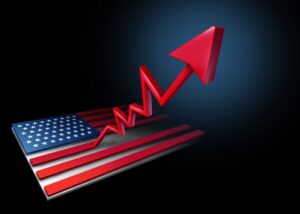Bullion Exempted in Liberation Day Tariffs: What This Means for Gold Investors
Posted onAs the world digests the impact of the White House’s Liberation Day tariffs, an exemption for metals—including bullion—tucked quietly inside the White House fact sheet. Let’s dig into the details.
According to the White House fact sheet released on April 2nd, metals are exempt from the reciprocal tariff. You can read this exemption in section (5) below. Bullion refers to precious metals like gold and silver in bulk form, like gold bars or coins.
“Some goods will not be subject to the Reciprocal Tariff. These include: (1) articles subject to 50 USC 1702(b); (2) steel/aluminum articles and autos/auto parts already subject to Section 232 tariffs; (3) copper, pharmaceuticals, semiconductors, and lumber articles; (4) all articles that may become subject to future Section 232 tariffs; (5) bullion; and (6) energy and other certain minerals that are not available in the United States.”
How Did Precious Metals React to the News?
Gold and silver prices tumbled sharply on the tariff exemption. This can be confusing even for the most seasoned investors. It’s complicated.
The sharp pullback in precious metals relates to a massive arbitrage trade occurring in recent weeks as traders rushed to get gold and silver out of London vaults to the U.S. ahead of the expected tariffs. Planes and ships have been loaded with bullion as U.S. firms and banks rushed to get gold and silver to the U.S.
The unexpected tariff exemption for bullion caused the premium for gold and silver to fall, resulting in lower prices. However, prices have soared back to new records as Friday, April 11th.
Here’s how a Bloomberg news article described it: “On Thursday, US premiums for precious metals tumbled after a list of exemptions from the tariffs included gold, silver, platinum and palladium. The difference between front-month Comex gold and spot gold in London dropped to $21 an ounce from over $62 on Wednesday. For silver, the differential — known by precious metals trader as the “exchange for physical” or EFP — tumbled from more than $1 an ounce to just 8 cents.”
What Does This Mean for Gold and Silver Investors Now?
Gold has soared more than 20% since the start of 2025 as investors around the globe have piled into the safety of precious metals. In a world where the U.S. dollar is falling, the stock market is crashing, and bond yields are in decline, there are few places for investors to turn to protect and preserve their wealth. Precious metals are a safe haven in the economic storm of uncertainty. The surprise tariff exemption for metals created a short-term dislocation in gold and silver prices as the premiums collapsed.
Bottom line? This is a short-term dip buying opportunity for long-term precious metals investors that won’t last long.
The underlying uptrend in gold and silver prices hasn’t changed, and the reason investors big and small have been rushing into gold this year hasn’t changed. If anything, the economic and market uncertainty has increased.
Recession and Bear Markets Rise
Following Liberation Day, J.P. Morgan raised its odds for a U.S. and global recession to 60% this year. S&P Global, Goldman also hiked U.S. recession probabilities following the new White House tariff policy, which imposed tariffs on dozens of countries around the globe. On April 4, the Nasdaq Composite traded more than 20% off its December high. Sustained declines of 20% or more is the definition of a bear market in stocks.
If you have money invested in the market, there is no historical playbook over the last 100 years for what the sweeping tariff policy changes will mean for the U.S. economy. Uncharted economic waters lie ahead, and the waves of selling likely aren’t over. The U.S. stock market hasn’t fully priced in a recession yet.
Trade Your Dollars for Bullion Now
Morgan Stanley predicts that gold could reach $3,400 in 2025, Bank of America raised its forecast to $3,500, and Goldman Sachs said gold could reach $4,500 in a low probability “extreme tail scenario.” There are few places investors can park their money in 2025 for wealth preservation and growth—and precious metals offer you that opportunity today.
Want to read more? Subscribe to the Blanchard Newsletter and get our tales from the vault, our favorite stories from around the world, and the latest tangible assets news delivered to your inbox weekly.







